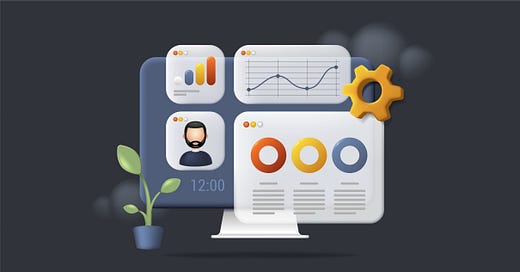The GCC exists to promote quality and ethical coaching practices, build meaningful connections with peers, and provide inclusive support for coaches across the world. We offer resources, activities, conversations, and collaboration needed for coaches to thrive.
Matching the right coaching model to the right situation isn’t as straightforward as one might hope—especially for those just starting their coaching journey. As an early coach in training, it would certainly be simpler if there were just three models, five skills, and that was all you needed to learn. But coaching is far more nuanced than that, and that’s a good thing! One of the most powerful aspects of coaching is its ability to be a highly customized process tailored to the unique needs of each client. This means no one is being funneled through a cookie-cutter process or expected to adapt themselves to a predetermined formula.
This customization places a greater responsibility on the coach, and that’s exactly how it should be. As coaches, it’s our job to identify the approach that works best for the client, allowing them to take ownership of their personal growth and progress. The heavy lifting of growth and development belongs squarely on the client’s shoulders!
Additionally, not every coach feels aligned with every model. Just because a model exists doesn’t mean it will resonate with you or feel natural in your practice. If a model feels clunky or creates resistance for you as a coach, it’s unlikely to serve the client effectively in your hands. A good coaching model must work for both parties within the coaching relationship.
Coaching Models vs. Coaching Skills
While coaching models and coaching skills are both essential elements of professional coaching, they serve different purposes and address distinct aspects of the process. Let’s explore how they differ:
Coaching Models
Coaching models are structured frameworks or methodologies designed to guide the coaching process. They provide a step-by-step outline for navigating sessions, ensuring consistency, direction, and flow. Essentially, a coaching model answers the question, “What’s the roadmap for the coaching session or relationship?”
Purpose: To provide structure and flow to the coaching process.
Examples:
GROW Model (Goal, Reality, Options, Will): A framework for clarifying goals, exploring realities, generating options, and deciding on actions.
CLEAR Model (Contract, Listen, Explore, Action, Review): A relationship-focused model emphasizing reflective action.
OSCAR Model (Outcome, Situation, Choices, Actions, Review): A solution-focused approach emphasizing outcomes and actionable steps.
How they are Used. Coaching models guide the overall structure of coaching sessions or a series of sessions, ensuring the process is purposeful and aligned with the client’s goals.
Think of a coaching model as the blueprint or map that helps structure the client’s journey from where they are to where they want to be.
Coaching Skills
Coaching skills, on the other hand, are the tools and techniques coaches use within the framework of a model. These skills enable coaches to communicate effectively, build trust, and facilitate insights and growth. In short, coaching skills answer the question, “How does the coach engage with the client?”
Purpose: To create meaningful interactions and promote insight, reflection, and action.
Examples:
Active Listening: Fully focusing on and understanding what the client is saying (and not saying).
Powerful Questioning: Asking open-ended, thought-provoking questions to encourage exploration.
Empathy: Demonstrating understanding and compassion for the client’s experience.
Accountability: Helping clients take ownership of their goals and actions.
Reframing: Helping clients shift their perspective to see challenges or opportunities in a new light.
How They Are Used: Coaching skills are applied moment-to-moment during sessions to foster connection, uncover insights, and empower the client.
Think of coaching skills as the tools that bring a model to life, enabling coaches to build trust and facilitate meaningful progress within the structure of a coaching framework.
How Coaching Models and Skills Work Together
Coaching models and coaching skills complement each other beautifully. The model provides the overall structure and direction, while the skills bring the interaction to life by fostering connection, insight, and action.
For instance:
A coach using the GROW model might rely on active listening and powerful questioning to clarify the client’s goals (the “G” in GROW) and explore their current reality (the “R”).
Similarly, within the CLEAR model, a coach might use empathy and reframing to explore the client’s challenges and guide them toward actionable steps.
In essence:
Coaching models = The “what” (structure and process).
Coaching skills = The “how” (interaction and techniques).
Mastering both is essential for effective coaching and enables coaches to guide clients toward meaningful transformation.
In this first part of our Coaching Models series, we will be looking at you, classic GROW model. We know you’ve been around forever and that you have rabid fans, and detractors, and we can’t wait to give you a look-over.
The GROW Model: A Closer Look
The GROW model is one of the most popular coaching frameworks, designed to help individuals set and achieve meaningful goals. Developed in the 1980s by Sir John Whitmore and colleagues, it is based on the principles of performance and self-directed learning. GROW stands for Goal, Reality, Options, and Will (or Way Forward) and provides a step-by-step structure for coaching conversations. Its clarity and action-oriented approach make it a practical tool for fostering progress and empowerment.
Here’s how the GROW model works in practice:
Goal: The coach helps the client define a clear, specific, and achievable objective.
Reality: The coach and client explore the client’s current situation, including challenges, strengths, and resources.
Options: Together, they brainstorm possible ways to move forward, considering alternatives and evaluating possibilities.
Will/Way Forward: The client commits to specific actions, deciding what they will do, when they will do it, and how they will stay accountable.
Example 1: A client wants to improve their work-life balance. Using the GROW model, the coach helps the client set a Goal of spending more quality time with their family. They explore the client’s Reality, discovering that excessive overtime is the biggest obstacle. They brainstorm Options, such as delegating tasks, setting boundaries, or scheduling family time. Finally, the client commits to specific actions in the Will stage, such as speaking to their manager about workload adjustments and scheduling two family dinners weekly.
Example 2: A client wants to start exercising but lacks motivation. The Goal is to work out three times a week. The Reality stage reveals that low energy after work is a barrier. They brainstorm Options, such as morning workouts or joining a class. In the Will stage, the client commits to a 20-minute morning walk three times a week and sets an accountability check-in with the coach.
Is the GROW Model Outdated?
Despite its popularity, the GROW model has faced critiques, with some arguing that it may be outdated or limited in its application. Critics highlight that it focuses primarily on external goals and actions, often neglecting the deeper internal work—such as addressing limiting beliefs, emotional blocks, or self-awareness—that is critical for sustainable change. Additionally, its linear structure can feel rigid and may not align with the dynamic, non-linear nature of real coaching conversations.
Modern coaching practices increasingly emphasize adaptability, emotional intelligence, and systemic perspectives—areas where GROW may fall short. While it remains a powerful tool for action planning, coaches working with complex, nuanced situations may find themselves turning to more integrative frameworks that go beyond GROW’s step-by-step structure.
In the end, every coach and client partnership is different. Experiment with various models, use your coaching skills to adapt them, and discover what works best for you and your clients in each unique situation.
Be sure to check out Part 2, as we take a look at the OSKAR Model:










